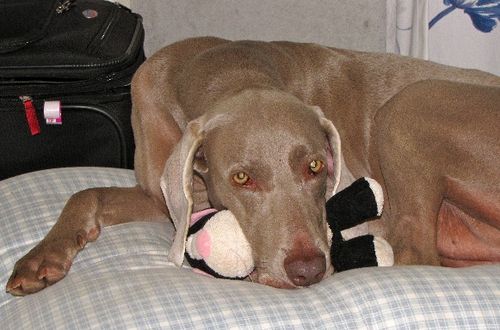We’ll be stopping in Hawaii for a week when we PCS back to the States this fall, which promises to be a lot of fun for us but maybe not too much fun for our dog, Sky. Initially, we were told she would have to go into quarantine, probably the whole time we’re there. This, thankfully, is not true.
Hawaii is rabies-free, and has very strict import rules. However, this beautiful place also has several options for pet owners. They spell it out in great detail on the state website.
We know that Sky just won’t do well in quarantine (she is, like her mom, a bit of a stress monkey.) So, we just completed the tricky process of qualifying her for Hawaii’s Direct Airport Release option. Since most of the anxiety and frustration I endured throughout this process was from misinformation, I thought I’d better share the truth with our OkinawaHai folks. Here it is, step by step:
1. Read through Hawaii’s animal import website carefully, so you know what you’re getting into.
2. Be sure your pet’s rabies vaccination is up to date!!
3. Determine when you need to have the blood sample shipped in order for the lab to receive it at least 121 days before you will arrive in Hawaii. To avoid actually counting days on a calendar (which is mind-numbing, trust me), simply use timeanddate.com’s Date Duration tool, found here.
4. Give yourself as much time as you possibly can. I spent about a week(!!) running back & forth across the island in pursuit of this goal, and we will just make our 121-day window.
5. Make an appointment to have your pet’s blood drawn (as early in the morning as you can get), and make sure to have all your paperwork filled out and with you. I had Sky’s done at Animal Hospital 22 and they were sweethearts about it. The translator was a huge help! (Kadena Vet will draw the blood, but the shipping & running around is still on you.)
6. A couple of days BEFORE the vet appointment, do your shipment preparation. This will include:
a. Picking up an International Waybill from FedEx (POC there is Ronnie. They have other employees, but Ronnie is the man with the good information. He’s also super-peaceful — which helped a lot because, of course, I wasn’t.)
b. Picking up an info pack from Kadena Vet (some of the info in it is wrong, but the pack contains several forms you need.)
c. Getting a USFJ Form 380EJ from the Customs office on Camp Foster (located in the PMO building.)
**Note** The guy at Customs did the 380EJ for me, no problem. However, there is a dispute between Customs and TMO as to which office is in charge of this. I would start with the Customs guy ~ he was much nicer about it. Also, keep in mind that your 380EJ is good for 10 days only.
d. Getting your box ready. It needs to be small enough to fit into the FedEx “clinic bag,” yet still big enough fit the sample, an ice pack, and the Request For Testing Form. I bought the smallest shipping box I could find at the Kadena BX, and it just fit. Ronnie had to crush the box corners down on the counter to get it to fit. But, the sample & everything also just fit into the box.
**Note** You can also send the sample to the lab at Kansas State University, but the cost is $15 higher (as of this writing.) Hawaii accepts lab results from these two labs only, though!! If the sample is processed at a different lab, it still has to be sent to KSU or the Army lab. Full instructions for KSU can be found on their website.
e. Making sure you have plenty of money to shell out for shipping. With the size of the box and the yen rate as bad as it is, we paid just shy of $140 for shipping alone. Um, ouch. It’s worth it to us, but sheesh!
7. Don’t feed your pet for 12 hrs before the blood draw is done. The sample has to be clear, and if your pet eats it will be all cloudy.
8. IF you can get to your vet, get the blood drawn, get your pet home, get the sample boxed up with a freshly frozen ice pack, and get to FedEx with plenty of money before 1100, you’re in business. Go for it, and I say rock on. If you can’t, don’t worry. You can refrigerate the sample overnight and peacefully arrive at FedEx when they open the next day. But here’s the kicker: samples cannot be shipped out on Fridays, since surely no one will be in the Army lab on a Saturday to receive them. So, I strongly suggest double-checking the truck schedule with Ronnie, and shipping the sample as early in the week as is feasible for you.
9. Make sure you have everything in the box before sealing it up at FedEx: sample, ice pack, request form, and check for the testing fee.
10. About 2-3 weeks after the sample is received, the lab will send the results to the submitting veterinarian’s office. So keep checking back with them until they say you’re good to go, and you can happily say, “Mahalo!”
(For additional info on getting your pets off island, see Barbara’s post HERE.)


